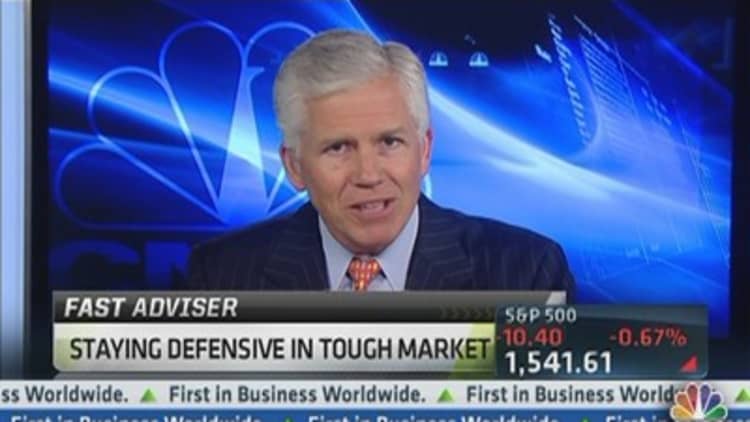We are about half-way through earnings season, so it seems like a good time to provide a preliminary evaluation of the results.
About 235 of the 500 companies in the S&P 500 have already reported results for the first quarter. Among these companies, roughly 74% beat the consensus expectation for EPS. The average overage has been 4.61%, which is slightly below the average beat for the past eight quarters. In general it seems that companies continue to sandbag their earnings guidance and they continue to beat those modest expectations.
Perhaps the more interesting metric to follow is revenues. Among the 235 companies that have reported, only 45% have beaten the consensus expectation for revenues. This means that 55% have missed expectations, with the average magnitude of the miss at 1.15%. Looking back over the past several quarters, we find that a pattern is developing: Despite the fact that companies are still beating their EPS expectations rather handily, they are increasingly falling short of top line expectations.

There are a few possible explanations that describe the why companies continue to beat EPS expectations but increasingly miss revenue expectations. The first is that companies facing weak growth prospects have been more aggressive in cutting expenses. As these companies continue to tighten their belts, whether by layoffs or other initiatives, the savings flow to the bottom line. A second possible explanation is that many companies are being much more aggressive in buying back their own stock.
Given the low level of interest rates, the economics of borrowing to reduce a company's share count have become much more compelling. And a lower share count leads to higher EPS. And finally, the low level of interest rates has allowed many companies to refinance their higher-cost debt. These savings also flow to the bottom line.
In general, investors should always prefer earnings that are generated through top-line growth as compared to earnings that result from internal corporate actions. There is a limit to the amount of expenses that can be cut and the amount of stock that can be repurchased. In other words, earnings growth that results from cost-cutting and/or stock buybacks is not sustainable. There will be a point at which management cannot get more blood from the stone.
So far, investors appear willing to pay for the earnings growth we see. The hope is that all the Fed's monetary easing will ultimately prime the pump to the point where acceptable revenue growth is again possible. But here's catch-22: Strong corporate revenue growth will only happen if and when we see an improvement in demand for products and services. The only way we will see improvement in demand is through better job and income growth. The only way job and income growth will improve is if companies gain the confidence to invest more aggressively in new projects and employees. Yet companies don't want to invest unless they see the end demand.
There are several possible reasons for the continued strength in stocks. The most plausible explanation, in our view, is that the Fed continues to hold down interest rates and push investors into riskier assets. Stocks, especially high quality ones, appear relatively attractive versus bonds that offer "return-free risk." However, the next leg up for stocks may only come if we see better prospects for top-line growth. Earnings simply cannot keep growing at an acceptable pace unless revenue growth improves.
Mr. Farr is a Contributor for CNBC television and has appeared on numerous broadcasts and has been quoted in global publications. He is a member of the Economic Club of Washington, DC, National Association for Business Economics, The World Presidents' Organization, and The Washington Association of Money Managers. He is the author of "A Million Is Not Enough," and "The Arrogance Cycle." His new book, Restoring Our American Dream: The Best Investment, debuted in book stores on March 30.


